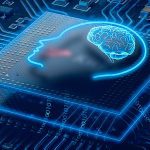Deep learning inteligencia artificial
wikipedia
Today, many terms related to artificial intelligence, machine learning and deep learning are widely used in the business context, especially when it comes to making correct predictions and analyzing data.
The production processes of today’s companies demand efficiency and automation. The market has grown, therefore, companies are increasingly focusing on the use of chatbots and other programs and systems to improve logistics, productivity and customer service, with a significant impact also on the presence and visibility of brands. In this regard, artificial intelligence, machine learning and deep learning are becoming increasingly important.
Some IT professionals determine that, using AI, machines can interpret a variety of data to achieve goals with greater flexibility, accuracy and efficiency.
Artificial intelligence is one of the most striking advances, as it enables machines to learn to predict certain types of behavior, based on data analysis. For this reason, it finds application in a variety of businesses, exploring machine learning capabilities on several fronts, such as:
wikipedia
This article explains deep learning vs. machine learning and how they fit into the broader category of artificial intelligence. Learn about the deep learning solutions you can build in Azure Machine Learning, such as fraud detection, facial and speech recognition, sentiment analysis, and time series forecasting.
By using machine learning and deep learning techniques, you can compile machine systems and applications that perform tasks normally associated with human intelligence. These tasks include image recognition, speech recognition and language translation.
Now that you have some general information about machine learning and deep learning, let’s compare the two techniques. In machine learning, the algorithm must be told how to make an accurate prediction; to do so, it must gather more information (e.g., by performing feature extraction). In deep learning, on the other hand, the algorithm can obtain information on how to make an accurate prediction through its own data processing, thanks to the artificial neural network structure.
wikipedia
Deep learning is part of a broader set of machine learning methods based on assimilating data representations. An observation (e.g., an image) can be represented in some forms (e.g., a vector of pixels), but some representations make it easier to learn tasks of interest
forms (e.g., a vector of pixels), but some representations make it easier to learn tasks of interest (e.g., «is this image a human face?») based on examples, and research in this area attempts to define which representations are best and how to create models to recognize these representations.
Large cloud service providers have begun to offer specialized infrastructure services for GPU processing. Nvidia has partnered with a number of providers to offer such services, Amazon, Azure and IBM to name a few.[5] The cloud has become a major player in this area.
Since the 2010s, advances in both machine learning algorithms and computer hardware have led to more efficient methods for training deep neural networks containing many layers of nonlinear hidden units and a very large output layer. By 2019, graphics processing units (GPUs), often with AI-specific enhancements, had displaced CPUs as the dominant method for training AI in the large-scale commercial cloud. [6]
Deep learning inteligencia artificial online
El aprendizaje profundo (también conocido como aprendizaje estructurado profundo) forma parte de una familia más amplia de métodos de aprendizaje automático basados en redes neuronales artificiales con aprendizaje de representación. El aprendizaje puede ser supervisado, semisupervisado o no supervisado[1][2][3].
Las arquitecturas de aprendizaje profundo, como las redes neuronales profundas, las redes de creencias profundas, el aprendizaje de refuerzo profundo, las redes neuronales recurrentes y las redes neuronales convolucionales, se han aplicado a campos como la visión por ordenador, el reconocimiento del habla, el procesamiento del lenguaje natural, la traducción automática, la bioinformática, el diseño de fármacos, el análisis de imágenes médicas, la inspección de materiales y los programas de juegos de mesa, en los que han producido resultados comparables y, en algunos casos, superiores al rendimiento de los expertos humanos[4][5][6][7].
Las redes neuronales artificiales (RNA) se inspiran en el procesamiento de la información y los nodos de comunicación distribuidos en los sistemas biológicos. Las RNA tienen varias diferencias con los cerebros biológicos. En concreto, las redes neuronales artificiales tienden a ser estáticas y simbólicas, mientras que el cerebro biológico de la mayoría de los organismos vivos es dinámico (plástico) y analógico[8][9][10].


